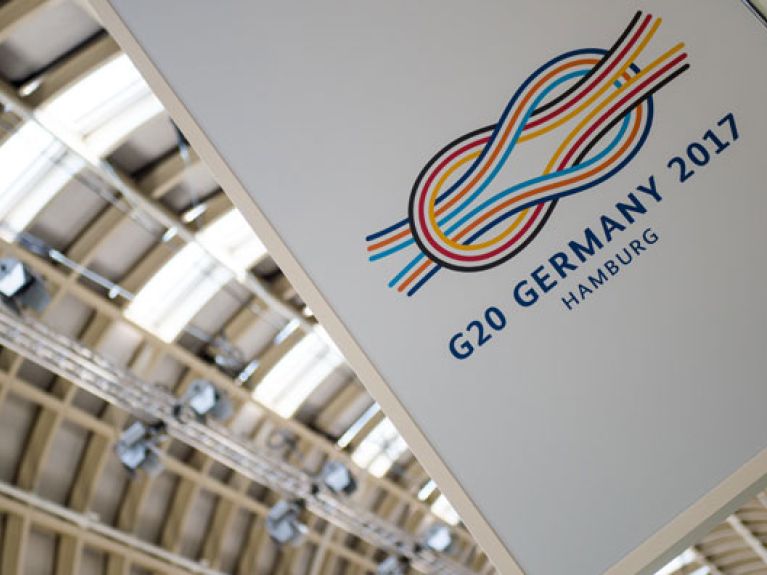Surprising facts and figures about the G20
The G20 countries vary considerably in terms of population, economy, level of digitalisation and environment.

Population
The G20 represents 64% of the world population. The average age differs considerably between the member countries. In Japan in 2015 there were 47 persons aged over 65 for every 100 people aged between 20 and 64 years. That is the highest value. This figure, which is known as the old-age dependency ratio, is 35 in Germany, but only 8 in Africa. That is by far the lowest value in the comparison of continents. According to calculations by the United Nations, the population of Africa will more than double by the middle of the century – from roughly 1.2 billion in 2015 to 2.5 billion people in 2050.
Economy
The G20 accounts for 80% of gross world product. The largest share is produced by the BRICS countries – Brazil, Russia, India, China and South Africa – with 31%, followed by the European Union (17%), the United States (16%) and the other G20 countries (also with 16%). In addition to this, the G20 members are responsible for over three quarters of world trade. In 2015, 77.5% of the goods and services exported worldwide came from the G20 countries. In the same year, 76.5% of all imported goods and services went to the G20. The largest trading nations in 2015 were China and the United States. Germany ranks third with regard to both imports and exports.
Digitalisation
According to estimates by the International Telecommunication Union (ITU), just under half of the world population (47%) used the Internet in 2015. In Europe the figure was approximately 80%, on the African continent only 25%. There were also great differences in Internet use between the G20 countries in 2015: ranging from less than 30% in India and Indonesia to 90% and more in the Republic of Korea, Japan and the United Kingdom. When it came to mobile telephone contracts in 2015, Saudi Arabia was ahead with 177 contracts per 100 inhabitants. Germany had 117 mobile telephone contracts per 100 inhabitants. At the bottom of the G20 ranking was India with 79 contracts per 100 inhabitants.
Environment
In 2015, China was responsible for almost 30% of all CO2 emissions worldwide and therefore by far the largest emitter. Large shares of these global emissions were also generated by the United States (14%), the European Union (10%), India (7%) and the Russian Federation (5%). Altogether, the G20 countries were responsible for over 81% of global carbon-dioxide emissions in 2015. The use of renewable energies also varies very significantly in the G20 countries. In 2014, renewable energies were only used minimally or not at all in Saudi Arabia, the Republic of Korea and the Russian Federation. In contrast, renewables’ share of primary energy consumption was relatively high in Brazil (39%), Indonesia (34%) and India (25%). The figure for Germany was 12%

